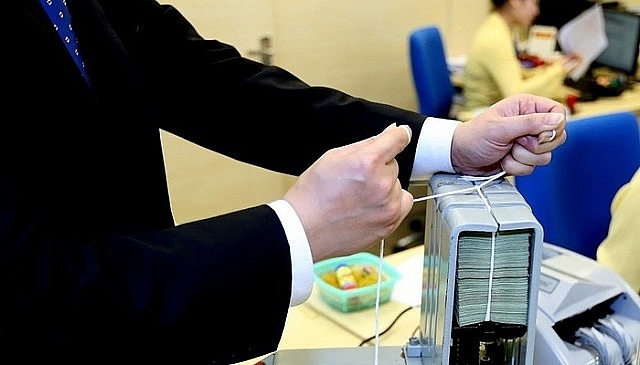VCN – During a meeting with voters after the 4th session of the 15th National Assembly in Can Tho on November 17, Prime Minister Pham Minh Chinh said that he was directing the banking industry to study the extension of reasonable credit growth limit (room) to ensure the safety of the system, stabilize the macro economy, and promote growth.
| Credit room has been eased, can enterprises solve the “thirst” for capital? | |
| Rapidly “inject capital” to support businesses |
 |
| Is it necessary to add more credit room at the end of the year? Photo: Internet |
With this “opening” signal, the report of the research team of SSI Securities Joint Stock Company (SSI Research) said that the State Bank (SBV) would soon announce a new credit limit for banks to solve the liquidity problems for the enterprises at present promptly.
However, according to SSI, it is also important to note that adding more credit limits would only solve a small part of the problem at the moment, coming from several factors below.
Firstly, according to information from the State Bank, the credit limit allocated to commercial banks was 13% and credit growth had only reached 11.5% compared to the beginning of the year. Therefore, there was room for commercial banks to provide credit, but the problem largely came from whether the criteria for loan disbursement were extended.
Secondly, how the limit was allocated in proportion of commercial banks was also a difficult problem for the SBV. Specifically, if the proportion was heavily tilted towards credit institutions with high safety ratios, these would usually be prudent banks and would not face many problems for tight liquidity in the corporate bond market caused by enterprises.
Thirdly, the capital-credit gap had not improved much; therefore, the loosening of the credit ceiling was more suitable for extending old loans rather than new ones.
The above statement is also receiving a lot of agreement, although many enterprises and experts have mentioned the expansion of the credit room to help the economy grow in the last months of the year. However, Dr. Tran Minh Tuan, Vice Chairman of the Board of Directors of Smart Invest Securities Joint Stock Company (AAS), said that loosening the credit room at this time was not the solution. Because there was only a little time left until the end of 2022, he worried enterprises would not have time to access capital.
Although the credit room is still about 2%, which has not been fully disbursed, banks are still in a tight spot when most banks in the market have already exceeded the lending/deposit ratio 90% in market 1, even many banks exceed 100%, which means that the amount of money banks lend has exceeded the amount of mobilized capital. The proof is that according to the State Bank, 10-month credit increased by 11.5%, but capital mobilization only increased by 4.8%.
Also commenting on this issue, Dr. Nguyen Quoc Hung, General Secretary of the Vietnam Bankers Association, said that loans and total deposits were almost the same, but banks faced many difficulties regarding capital adequacy ratio. Therefore, if the SBV expanded the credit room, commercial banks would not have enough capital to lend more.
In the opinion of some experts, credit management from the beginning of the year until now had revealed many shortcomings, when it increased rapidly in the first months of the year, then it was almost “frozen”. Moreover, the economy’s money supply was scarce due to credit and slow disbursement of public investment capital, difficulties from the bond market, and real estate.
Therefore, it is suggested that the SBV assign credit quotas to banks at the beginning of the year so that banks and enterprises could proactively plan their business; or the State Bank should only regulate room in some speculative and high-risk industry groups. But above all, enterprises want the credit room management to be more flexible, creating a basis to help stabilize the macro, secure the financial and banking system, and recover and remove difficulties for production and business.
By Huong Diu/ Binh Minh
